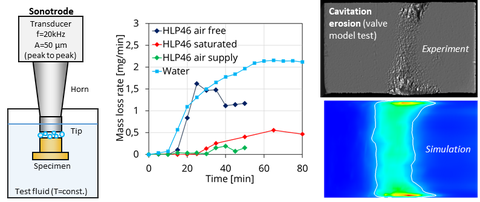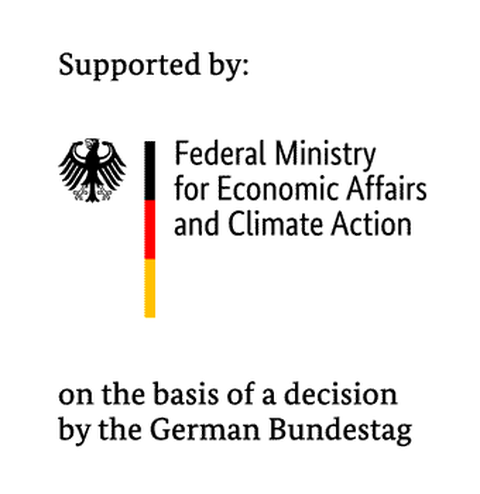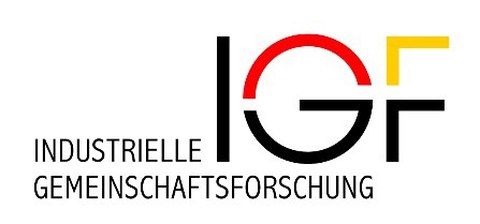Cavitation erosion of various hydraulic fluids and their mixture components
Task / Objective
The aim of this research project was to analyze the cavitation erosion behavior of various hydraulic fluids, their basic components and additives and to quantify the influence of the chemical composition and physical properties of the fluid on the cavitation intensity. As part of the project, significant correlations between the chemical-physical-technical parameters and the cavitation erosion behavior of the fluids were to be identified and causal relationships worked out. The transferability of the results to real hydraulic flows was to be verified. In addition, the simulation methodology was to be further developed in order to map the influence of the air on cavitation erosion even at cavitation-intensive operating points and thus to be able to localize and quantify the erosion simulatively with the help of cavitation indices.
Solution
Extensive experimental investigations of the cavitation erosion behavior of hydraulic fluids and their mixture components were carried out. Due to the large number of measurements required, the erosion tests were carried out with test specimens. For this purpose, a standardized test method from materials technology was used to quantify cavitation erosion using a sonotrode (ASTM G32). This test method was used to quickly investigate as many fluids and operating conditions as possible. However, it has the disadvantage that it can only simulate real hydraulic conditions to a limited extent because cavitation erosion is induced by ultrasound. The sonotrode tests formed the experimental focus of this project.
To check the transferability of the sonotrode tests to cavitation in hydraulics, another standardized test rig for quantifying cavitation erosion via free jet (ASTM G134) was adapted and used for the fluid-specific investigation. The advantage of this method is that the cavitation is induced hydrodynamically and therefore closely resembles the processes in real pumps and valves.
CFD simulations with a cavitating valve flow were carried out in parallel to the erosion tests. A new gas cavitation model was developed for this purpose. The damage-relevant steam cavitation was simulated using the Zwart-Gerber-Belamri model optimized for mineral oil, whereas the influence of the air was modelled using a separate barotropic approach. The new model was validated with visualization experiments and applied to highly erosive flow conditions. Based on the good results of the cavitation indices according to Nohmi in a previous project for the water-containing hydraulic fluid HFC, these were applied to the oil-hydraulic flow in order to localize and quantify cavitation erosion.
Results
The project provided extensive findings from the sonotrode and free jet tests carried out. This concerns both the cavitation erosion behavior of various hydraulic fluids over time and the procedure itself. However, the comparison of the sonotrode results with those of the free jet led to the key finding that the transferability of the indirect sonotrode tests on the cavitation erosion of hydraulic fluids to real hydraulic flows is only possible to a limited extent.
The reason for this is assumed to be the formation of an oil-air foam within the gap. As a result, the indirect method mainly measures the foam formation and its effect on the erosivity of the hydraulic fluid. This thesis is supported by the proven, strongly damping effect of air on cavitation erosion. Further research activities should examine whether the limited transferability only applies to the indirect method or whether the sonotrode test method as a whole is affected by the effect.
The free jet test method according to ASTM G134 appears to be the more reliable and realistic method for investigating cavitation erosion of material, operating conditions and fluids. This method should be increasingly used to improve the cavitation erosion behavior of hydraulic fluids.
On the simulation side, it was demonstrated that detailed localization and quantification of cavitation erosion in very good agreement with the erosion experiments is possible with the aid of adequate modelling and using the cavitation erosion indices according to Nohmi. The erosion-attenuating influence of the air was also mapped by the simulation. From the cavitation indices and the cyclic material properties, the relative changes in mass erosion could be estimated in very good agreement with the experiment.
The project "Cavitation erosion of various hydraulic fluids and their mixture components" (IGF project no. 21981 BR) was funded by the Federal Ministry of Economics and Climate Protection (BMWK) as part of the " Industrielle Gemeinschaftsforschung (IGF)" program on the basis of a decision by the German Bundestag.
Duration: 01.09.2021 until 29.02.2024
The final report can be obtained from the Forschungs-kuratorium Maschinenbau e. V. as the supervising research association (postal address: Lyoner Str. 18, 60528 Frankfurt am Main, e-mail: info@fkm-net.de).



